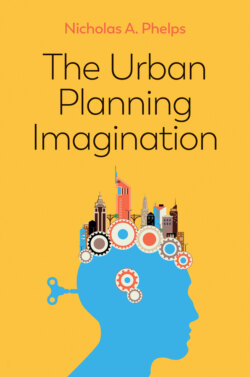Читать книгу The Urban Planning Imagination - Nicholas A. Phelps - Страница 11
History and the urban planning imagination
ОглавлениеAn historical perspective on cities and urban planning is needed since, as Patrick Geddes (1904: 107) argued, ‘a city is more than a place in space, it is a drama in time’. The securing of shelter from the elements and the mobilization of ‘things to hand’ are central to the human condition of becoming. As with the sociological imagination (Mills, 1959), the urban planning imagination must firmly locate itself within the stream of individual, club and state actions by which our cities are built. Acts of urban planning emerge as something ordinary in their immediacy and yet extraordinary in their longer-term effects. An historical sensibility – a reflexive sensitivity to the temporality of the city and urban planning itself – is vitally important to understanding the becoming of cities. Conservation of the natural and built environment is an important substantive concern of urban planning. History is important to excavating and understanding the failed or lost potentials of cities and associated urban planning imaginations. However, the backwards look can never be the majority part of urban planning, let alone its entirety. This is why I choose to define urban planning as an imaginative, future-oriented act even as it is cognizant of the past.
Urban planning is characterized by significant continuity as a result of particular, durable, administrative and legal traditions that inhere within societal cultures and, more recently, in the statutory basis of national and consequently local planning systems, as I discuss in chapter 6. Continuity is a product of the habits and conventions adopted and acquired by generations of planners – whether individuals, corporations or states – and which become fossilized in policies, plans and meanings and values attached to particular sites in what we understand as distinct urban planning cultures. At the same time, it is apparent that urban planning has been the subject of significant change. Urban planning activities and processes are subject to multiple temporalities or rhythms (Abram, 2014) from the long term of scenarios, to the mid-term of forward or strategic spatial planning, to the short term of decisions on individual development proposals. Indeed, there is a sense in which change may be the only constant of urban planning. Histories reveal both important changes in the substantive concerns of urban planning over time in single places and historical slippages in these same concerns from one place to another. It should be clear, then, that the history of urban planning is not linear – heading inexorably in the direction of ‘progress’. History repeats itself in terms of how the substantive concerns of urban planning come into and go out of view, and how the wisdom associated with urban planning is valued or undervalued.
